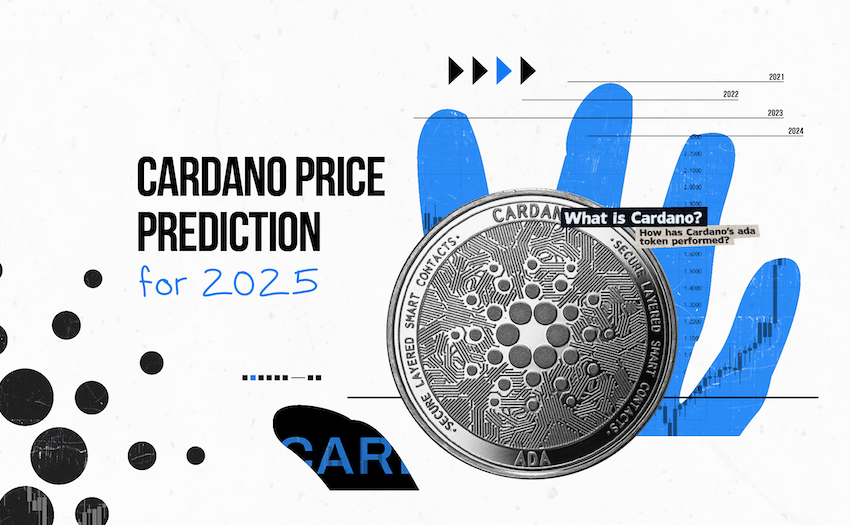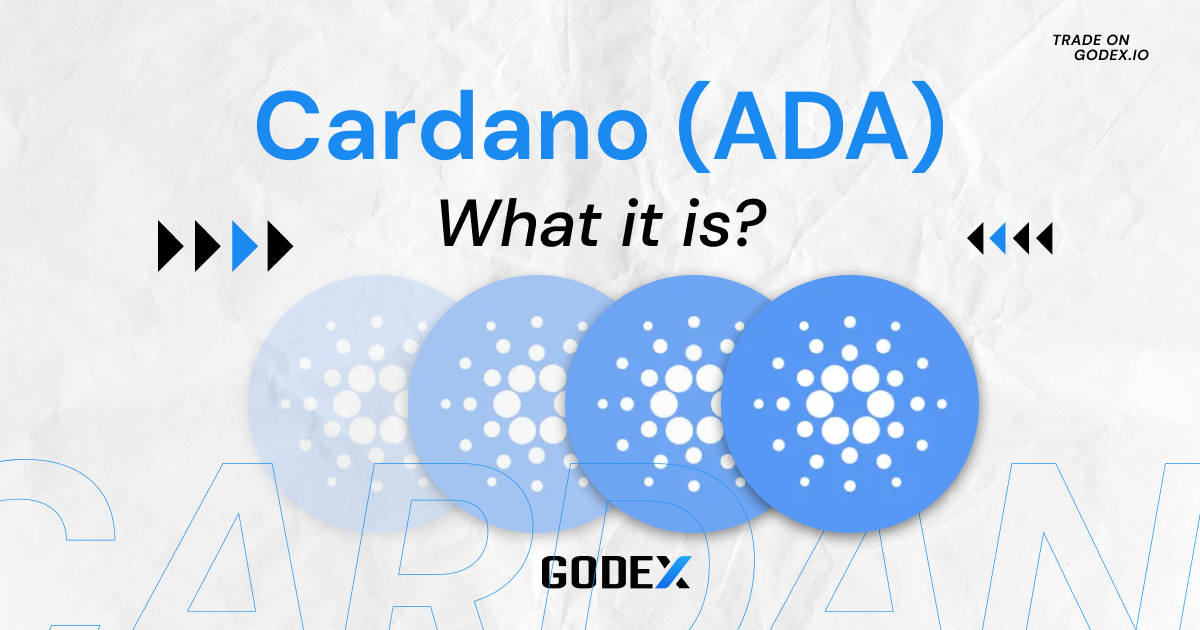About ADA
Name: Cardano
Symbol: ADA
Circulating supply: 0 $
Max supply: 0 $
Price: 0,38638 $
Volume 24h: 23.075 M $
Market Cap: 14.688 B $
Percent change 24h: 0,73 %
About DOT
Name: Polkadot
Symbol: DOT
Circulating supply: 0 $
Max supply: 0 $
Price: 1,90024 $
Volume 24h: 5.564 M $
Market Cap: 4.785 B $
Percent change 24h: 1,4 %
Cardano vs Polkadot: An Overview
The ongoing ADA vs Polkadot debate stands as one of the cryptocurrency domain's most notable clashes, fueled by their distinct qualities, applications, and investment options. This comparison delves into the nuances, unraveling both strengths and weaknesses. Originating from the visionary minds behind Ethereum, Cardano and Polkadot, as 3rd-generation blockchains, tackle inherent issues of traditional blockchains. Despite both achieving status as major cryptocurrencies, their fundamental differences often go overlooked. As Ethereum alternatives, they draw attention for overcoming Ethereum's limitations, earning the moniker of "Ethereum killers." Investors should discern the specific roles each plays in the market, understanding the disparities that make them suitable for varied applications.
ADA Fundamentals
Cardano (ADA) is a revered token in crypto circles, recognized for its utopian blockchain network. Conceived by Charles Hoskinson, an Ethereum co-founder, Cardano emerged in 2017 with a research-driven ethos, separating itself from Bitcoin and Ethereum's limitations. The two-layered architecture, featuring a unique settlement layer and computational layer, ensures flexibility and security in smart contract execution. With its Ouroboros consensus mechanism, Cardano pioneers sustainability, offering an energy-efficient alternative. Notably, its novel Layer-2 Scaling solution, Hydra, promises higher throughput and transaction speeds. Beyond technology, Cardano stands as the first scientifically grounded and peer-reviewed blockchain, ensuring a robust and fault-tolerant system. As of 16.12.2025, Cardano stands at 0.386380000000 .
DOT Fundamentals
Polkadot (DOT) emerges as a revolutionary multi-chain interchange, conceived by Ethereum co-founder Gavin Wood. Launched in 2020, Polkadot, often labeled a Layer-0 network, fosters interoperability, breaking down barriers between blockchains. Imagine it as a network of interconnected independent blockchains, united by the Relay Chain or Parachain, enabling seamless data transfer. Its strengths lie in interoperability, with Parachains facilitating diverse applications and adaptive scalability. Polkadot's Proof-of-Stake consensus ensures decentralization and sustainability. As a multi-chain app environment, Polkadot streamlines cross-chain interoperability, allowing developers to harness Ethereum's security and other networks' scalability for next-gen Dapp development. While its modular framework offers flexibility, limited parachain availability and auction-based slots pose challenges. As of 16.12.2025, Polkadot stands at 1.900240000000, affirming its popularity among users and investors.
Crucial Variances: Cardano and Polkadot
Beyond the coin prices, the divergence between Cardano and Polkadot encompasses key aspects:
Circulating Supply:
Cardano exhibits a circulating supply of 0 ADA coins, with a maximum supply capped at 0 ADA coins. In contrast, Polkadot features a circulating supply of 0 DOT coins, and its maximum supply is set at 0 DOT coins.
Trading Volume:
Cardano records a robust 24-hour trading volume of 23074709.764401786000, while Polkadot sees a daily trading volume of 5563780.786640609000.
Percentage Price Change:
Over the last day, Cardano has experienced a rate change of 0, and a positive shift of 2.64% over the past 7 days. Meanwhile, Polkadot reflects a rate change of 0 in the last day and a decrease of 29.95% over the 7 days.
Development Approach:
Cardano embraces a rigorous academic approach, with every upgrade peer-reviewed for robustness. Polkadot focuses on practicality, designed as a Layer-0 blockchain connecting various Layer-1 blockchains for adaptability.
Architecture:
Cardano's two-layered structure separates settlement and computational layers, hosting a range of dApps directly. Polkadot's Relay Chain connects individual parachains, fostering superior interoperability among apps.
Consensus Mechanism:
Cardano employs the Ouroboros Proof-of-Stake for efficiency and security. Polkadot utilizes Nominated Proof-of-Stake, allowing elected validators to secure the relay chain.
Tokenomics:
ADA serves as Cardano's lifeblood, featuring a capped supply for transaction fees and network security. DOT, Polkadot's native crypto, also covers transaction fees but has an inflationary supply.
Infrastructure:
Polkadot facilitates multi-chain connectivity in a single mainnet, while Cardano employs a two-layer system.
Environmental Impact:
Cardano outshines in eco-friendliness, using significantly less electricity compared to Polkadot, making it a top contender among green cryptocurrencies.
Price Evolution of ADA vs DOT
Polkadot (DOT):
Polkadot's journey began in 2016 when Dr Gavin Wood conceptualized a "sharded version of Ethereum" to address scalability. DOT's ICO started in 2017 at $0.29, with over $300 million raised. Launched in August 2020 at $2.8969, DOT surged to $45 by January 2021. The all-time high (ATH) peaked at $55 in November 2022. After a bearish phase, DOT recovered in 2023, priced at $8.99. Notably, DOT's ATH marked a 101.79% increase over the past year.
Cardano (ADA):
Founded in 2015 and launched in 2017, Cardano's initial coin price was $0.02461. ADA surged during the 2018 bull run, hitting an ATH of $0.997. Post-2018, ADA traded below $0.10 until 2021, reaching a new ATH of $3.10. Challenges, including criticism and SEC scrutiny, impacted ADA's value. Settling at $0.24, ADA exhibited steady growth in late 2022, currently priced at $0.6359. Over the past month, ADA recorded a growth of 58.38% year-over-year, with an impressive annual growth of 138.07% in 2023. The current price is 0.386380000000, down 80% from its ATH.
In summary, both ADA and DOT showcase volatile yet resilient price histories, influenced by market dynamics, technological developments, and broader regulatory considerations.
Pros and cons of Cardano
Pros:
- Advanced Research and Peer-Review: Cardano's development follows a meticulous academic approach, incorporating peer-reviewed research. This enhances the network's reliability and security.
- Two-Layered Architecture: With a distinct separation between the settlement and computational layers, Cardano's architecture allows for a growing range of dApps directly on its platform.
- Sustainability and Energy Efficiency: Utilizing the Ouroboros Proof-of-Stake consensus mechanism, Cardano is recognized for its sustainability and energy efficiency, providing an eco-friendly alternative.
- Infinite Scalability: Cardano's innovative Layer-2 Scaling solution, Hydra, is designed to scale organically, accommodating a potentially vast number of transactions while maintaining efficiency.
- Low Transaction Costs: Offering fast transaction speed and low (or even free) transaction costs, Cardano provides a cost-effective utility for users and developers.
Cons:
- Slow Development Pace: The thorough peer-review process, while ensuring stability, can lead to slower development cycles, potentially hindering the platform's agility in responding to rapidly evolving market demands.
- Limited Smart Contract Adoption: Cardano faced criticism for delays and unmet expectations regarding smart contract functionality. While addressed in the Alonzo hard fork, it impacted Cardano's standing in the competitive smart contract space.
- SEC Scrutiny and Regulatory Concerns: Being listed as a security in recent SEC allegations against Binance and Coinbase caused ADA's value to decline, highlighting potential regulatory challenges.
- Competition with Established Ecosystems: Competing with well-established blockchain ecosystems like Ethereum, Cardano needs to demonstrate its unique value proposition to attract users, developers, and projects.
Pros and cons of Polkadot
Pros:
- Active Development: Polkadot consistently ranks high in development activity, showcasing ongoing engagement and efforts by developers to enhance and maintain the network. This signals a commitment to continuous improvement.
- Sustainability and Energy Efficiency: Employing a Proof-of-Stake (PoS) consensus algorithm, Polkadot is recognized for its sustainability and energy efficiency. The Nominated Proof-of-Stake (NPoS) mechanism further contributes to decentralization and efficiency.
- Interoperability: A core strength of Polkadot lies in its ability to facilitate interoperability between different blockchains. The network acts as a bridge, enabling communication and data transfer between diverse blockchain ecosystems.
- TVL Growth: Polkadot has demonstrated strength in terms of Total Value Locked (TVL) in decentralized finance (DeFi). The TVL has shown a notable increase, reflecting growing interest and utilization of Polkadot's capabilities.
- Adaptive Scalability: Polkadot's architecture is designed for organic scalability, automatically adjusting to accommodate an increasing number of valid transactions. This feature ensures the system's ability to handle future demands effectively.
Cons:
- Development Activity Fluctuation: Similar to Cardano, Polkadot has seen fluctuations in its development activity, which could impact the perception of network stability and ongoing improvement.
- User Base Considerations: While Cardano has shown a boost in Total Value Locked, Polkadot may face challenges in aligning user growth with other positive metrics. The number of users, at the time of the report, is a factor worth monitoring for sustained ecosystem expansion.
- Competition and Exploitation: Polkadot competes with other general-purpose blockchains, and there have been instances of code vulnerabilities leading to significant exploits, resulting in financial losses for users.
- Limited Parachain Availability: The limited number of available parachain slots, allocated through auctions, may lead to high costs for acquiring these slots. This limitation could potentially price out certain applications and users.
- Complexity for Developers: The architecture and design of Polkadot, while providing advanced features, may be complex for developers to grasp, potentially hindering widespread adoption and participation in the ecosystem.
Should You Buy Cardano or Polkadot?
Choosing between ADA or DOT —this decision hinges on your priorities. If you seek adaptability and a connected blockchain network, Polkadot's multi-chain system may appeal. On the other hand, Cardano's emphasis on stability, environmental consciousness, and outreach to underserved regions positions it uniquely. Polkadot shines with a broader ecosystem, while Cardano focuses on targeted impact. Both have pros and cons, making the Cardano vs. Polkadot competition a draw. Diversification in your crypto portfolio remains key, as the future dynamics of these third-gen blockchains are unpredictable.
ADA and DOT Future Perspectives
Cardano's future looks promising with the upcoming launch of the age of Voltaire in 2024, introducing on-chain governance and a decentralized treasury. The blockchain aims for full decentralization, with partner chains, the Mithril protocol, and Hydra state channels scaling solution set to release. Price predictions estimate ADA reaching $0.95 by the end of 2024, with potential highs of $1.55 and lows of $0.45. In 2025, ADA could see further growth, reaching an estimated $2.80, potentially hitting new all-time highs of $3.50. Long-term projections for 2030 suggest ADA's average price could reach $4.40, with highs of $6 and potential lows of $2.80.
Polkadot anticipates a strong 2024, with upgrades in governance and potential scalability improvements. Price predictions estimate DOT reaching highs of $16, lows of $6.20, and an average price of $11.20 by the end of 2024. Looking ahead to 2025, Polkadot aims to overcome challenges, such as a smaller community and usability concerns, with a potential price range of $23.3 to $44. The long-term outlook for 2030 remains bullish, predicting possible highs of $85, lows of $55, and an average price of $70. Analysts provide varying forecasts, with projections ranging from $4.68 to $11.37 by the end of 2023.
Key Takeaways: ADA vs DOT
In the ADA vs Polkadot comparison, the key takeaway is the distinction in their roles within the crypto market. Cardano operates as a standalone Layer One blockchain, boasting its ecosystem of dApps and services. In contrast, Polkadot serves as a foundational network, enabling interoperability between various blockchains within its ecosystem. While Cardano holds a larger market share and offers robust platforms, Polkadot's potential lies in its parachains, like Moonbeam and Astar, which could attract users and surpass Cardano's position. Ultimately, both projects bring value, and surviving the evolving crypto landscape depends on their real-world use cases.
Related Search
Related exchanges
F.A.Q.
Which offers a more promising investment: Cardano or Polkadot?
The more promising investment between Cardano and Polkadot depends on individual preferences and risk tolerance. Cardano's stable ecosystem and growing adoption make it a compelling choice for long-term investors, while Polkadot's innovative approach and potential for dynamic parachain ecosystems attract those seeking high-risk, high-reward opportunities.
Are there other cryptocurrencies worth considering?
Certainly, besides Cardano and Polkadot, Ethereum and Binance Coin are noteworthy cryptocurrencies, each offering unique features and strong ecosystems, making them worth consideration for diverse investment strategies.
What distinguishes ADA from DOT?
The Cardano vs Polkadot difference primarily lies in the rate, which can be learned using the ADA vs DOT calculator or the Cardano vs Polkadot vs usd real-time chart.




